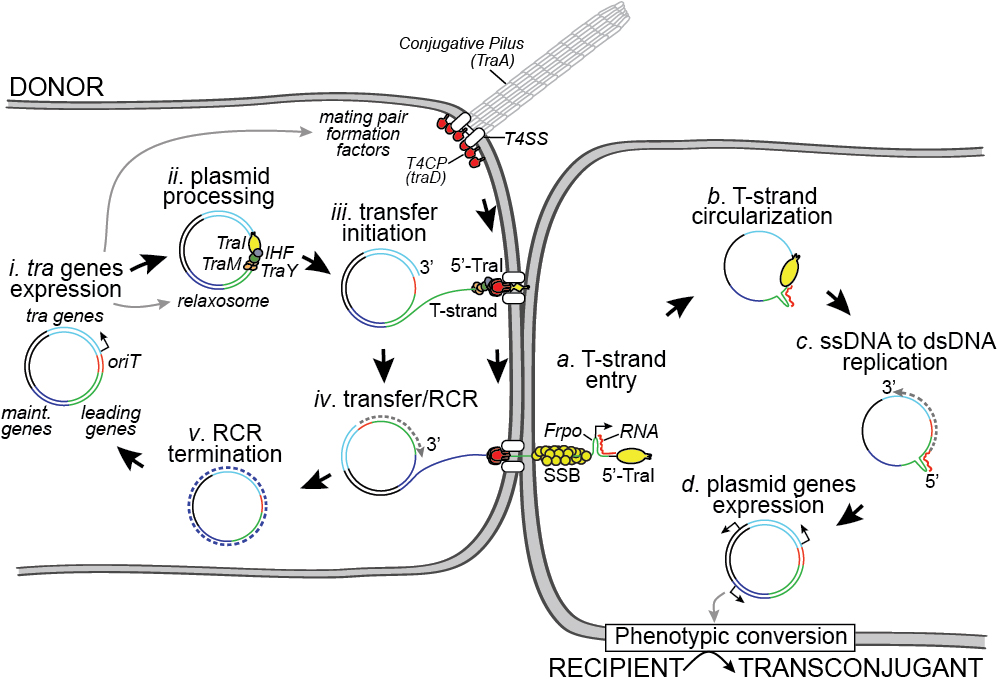Preprint
Review
Bacteria DNA Conjugation: from The Cellular to The Community Level
This version is not peer-reviewed.
Submitted:
16 September 2020
Posted:
17 September 2020
You are already at the latest version
A peer-reviewed article of this preprint also exists.
Abstract
Bacterial conjugation, also referred to as bacterial sex, is a major horizontal gene transfer mechanism where the DNA is transferred from a donor to a recipient bacterium by direct contact. Conjugation is universally conserved among bacteria and occurs in a wide range of environments (soil, plant surfaces, water, sewage, biofilms and host-associated bacterial communities). Within these habitats, conjugation drives the rapid evolution and adaptation of bacterial strains by mediating the propagation of various metabolic properties, including symbiotic life-style, virulence, biofilm formation, or resistance to heavy metals and, most importantly, resistance to antibiotics. These properties make of conjugation a fundamentally important process at the center of extensive study. Here, we review the key steps of conjugation by following the life-cycle of the F plasmid during transfer from the donor to the recipient cell. We also discuss our current knowledge of the extent and impact of conjugation within an environmentally and clinically relevant bacterial habitat, bacterial biofilms.

Keywords:
Subject:
Biology and Life Sciences - Immunology and MicrobiologyCopyright: This open access article is published under a Creative Commons CC BY 4.0 license, which permit the free download, distribution, and reuse, provided that the author and preprint are cited in any reuse.
Alerts
MDPI Initiatives
Important Links
© 2025 MDPI (Basel, Switzerland) unless otherwise stated





